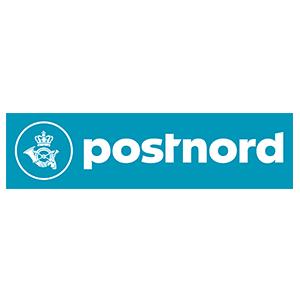This means it’s easier for you to pull in a colleague to help with debugging or share access to an app in the team. The combination of custom resources and custom controllers are often referred to as a Kubernetes Operator. The key use case for operators are to capture the aim of a human operator who is managing a service or set of services and to implement them using automation, and with a declarative API supporting this automation. Human operators who look after specific applications and services have deep knowledge of how the system ought to behave, how to deploy it, and how to react if there are problems.
Developers obtain first-hand experience of the tools and concepts that the operations team uses to maintain production workloads. The effects of each revision can be quickly observed in your local Kubernetes cluster, permitting greater throughput. Developers can rapidly test theories and evaluate new solutions, even if the problem lies in something specific to Kubernetes such as connections between services.
Okteto local kubernetes development
The IDE can now identify references to specific YAML schemas included as comments and provides code completion and syntax validation within YAML files based on the specified schema, whether it’s stored locally or accessed remotely. In production, you may be moving from a model where you or a small group of
people are accessing the cluster to where there may potentially be dozens or
hundreds of people. In a learning environment or platform prototype, you might have a single
administrative account for everything you do. In production, you will want
more accounts with different levels of access to different namespaces. The KCSA is a pre-professional certification designed for candidates interested in advancing to the professional level through a demonstrated understanding of foundational knowledge and skills of security technologies in the cloud native ecosystem.
Kubernetes can deploy and scale pods, but it can’t manage or automate routing between them and doesn’t provide any tools to monitor, secure, or debug these connections. On the one hand, optimizing for maximum replication of production will give you the greatest chance of eliminating environment-specific bugs. However deploying to real production-like infrastructure could be a time-consuming process that requires a CI pipeline run and new cloud resources to be provisioned. Waiting for these procedures to complete after each change would slow down development.
What Makes a Good Development Environment?
Whether you manage your own
control plane or have a cloud provider do it for you, you still need to
consider how you want to manage your worker nodes (also referred to
simply as nodes). To learn about available options when you run control plane services, see
kube-apiserver,
kube-controller-manager,
and kube-scheduler
component pages. For highly available control plane examples, see
Options for Highly Available topology,
Creating Highly Available clusters with kubeadm,
and Operating etcd clusters for Kubernetes. The Certified Kubernetes Security Specialist program provides assurance that the holder is comfortable and competent with a broad range of best practices. CKS certification covers skills for securing container-based applications and Kubernetes platforms during build, deployment and runtime. We could choose to run the frontend process locally and connect it to the backend process running in Kubernetes through a bridge.
- This setup eliminates the need for building container images in a continuous integration pipeline and rolling out a cluster update for simple changes.
- You can grow that environment by adding
worker nodes, as reflected in the diagram illustrated in
Kubernetes Components. - We also need to map the port of the proxy running in the cluster with the local instance.
- Each worker node includes the tool that is being used to manage the containers — such as Docker — and a software agent called a Kubelet that receives and executes orders from the master node.
- I wrote a separate post about the difference between these two methods of working with a remote cluster, but both have some common strengths and weaknesses that I want to focus on in this post.
While this guarantees standardization of Kubernetes distribution, version, and resource availability, it can reduce developer autonomy as they no longer own their cluster. It can also create bottlenecks when many engineers are waiting for new changes to be deployed inside the shared cluster. Although individual containers remain the same, you have an extra layer handling inbound traffic, networking between services, and peripheral concerns such as configuration and storage. Effective local development environments should closely mimic production infrastructure while offering a tight feedback loop that enables rapid iteration. Kubernetes has become one of the most popular ways to run containerized workloads in production. It simplifies deploying, scaling, and maintaining the containers that run your service.
Why choose Red Hat OpenShift Serverless?
OpenShift is favored for this flexibility, which offers the same user experience whether you’re deploying to an on-premise data center, a public cloud, or edge devices. Part of its appeal comes in how it enables a DevOps approach to unite teams, increasing operational efficiency as it reduces the total cost of ownership for applications and infrastructure. OpenShift shines on bare metal, and for businesses built with multiple apps running on VM-based architecture. Kubernetes empowers developers to utilize new architectures like microservices and serverless that require developers to think about application operations in a way they may not have before. These software architectures can blur the lines between traditional development and application operations, fortunately, Kubernetes also automates many of the tedious components of operations including deployment, operation, and scaling. For developers Kubernetes opens a world of possibilities in the cloud, and solves many problems, paving the way to focus on making software.
Each VM runs its own OS instance, and you can isolate each application in its own VM, reducing the chance that applications running on the same underlying physical hardware will impact each other. VMs make kubernetes based assurance better use of resources and are much easier and more cost-effective to scale than traditional infrastructure. And, they’re disposable — when you no longer need to run the application, you take down the VM.
Red Hat named a Leader in Multicloud Container Platforms
Many of its top contributors had previously worked on Borg;[12][13] they codenamed Kubernetes “Project 7” after the Star Trek ex-Borg character Seven of Nine[14] and gave its logo a seven-spoked wheel. Unlike Borg, which was written in C++,[12] Kubernetes source code is in the Go language. For existing OpenShift on VMware vSphere clusters that were initially deployed in Red Hat OpenShift 4.12 or earlier, clusters will need to undergo the vSphere CSI migration after upgrading to Red Hat OpenShift 4.14. Migration does not change how you use all existing API objects, such as persistent volumes, persistent volume claims, and storage classes. Beginning with OpenShift Container Platform 4.14, the 24-month Extended Update Support (EUS) is extended to include 64-bit ARM, IBM Power (ppc64le), and IBM Z (s390x) platforms and will continue on all subsequent even-numbered releases.
Note that for the target Kubernetes cluster we’ve been using Minikube locally, but you can also a remote cluster for ksync and Skaffold if you want to follow along. A certified Kubernetes administrator has demonstrated the ability to do basic installation as well as configuring and managing production-grade Kubernetes clusters. Kick off a local container with Run Container from the Gefyra start screen (Figure 9). Upon loading the page, you will see the application’s output displayed in your browser. Although the output may not be visually stunning, it is functional and should provide the necessary functionality for your needs. Examples of popular container runtimes that are compatible with kubelet include containerd (initially supported via Docker), rkt[51] and CRI-O.
Containers vs. virtual machines vs. traditional infrastructure
Kubernetes offers a uniform interface for orchestrating scalable, resilient, and services-based applications. However, its complexity can be overwhelming, especially for developers without extensive experience setting up Kubernetes clusters. That’s where Gefyra comes in, making it easier for developers to work with Kubernetes and improve the process of creating secure, reliable, and scalable software. You can now centrally deploy and manage on-premises bare metal clusters from Red Hat Advanced Cluster Management (RHACM) running in AWS, Azure, and Google Cloud. This hybrid cloud solution extends the reach of your central management interface to deliver bare metal clusters into restricted environments. In addition, RHACM features an improved user experience for deploying OpenShift in Nutanix, expanding the range of partnerships providing metal infrastructure where you need it.
A Linux container is a set of processes isolated from the system, running from a distinct image that provides all the files necessary to support the processes. Emirates NBD, one of the largest banks in the United Arab Emirates (UAE), needed a scalable, resilient foundation for digital innovation. Setting up a server took 2 months, while making changes to large, monolithic applications took more than 6 months. It includes all the extra pieces of technology that make Kubernetes powerful and viable for the enterprise, including registry, networking, telemetry, security, automation, and services. You’ll need to add authentication, networking, security, monitoring, logs management, and other tools. Other parts of Kubernetes help you balance loads across these pods and ensure you have the right number of containers running to support your workloads.
What’s new in the Red Hat build of Quarkus version 3.2
This is called the Cluster API.[87] A key concept embodied in the API is using Infrastructure as Software, or the notion that the Kubernetes cluster infrastructure is itself a resource / object that can be managed just like any other Kubernetes resources. Similarly, machines that make up the cluster are also treated as a Kubernetes resource. The provider implementation consists of cloud-provider specific functions that let Kubernetes provide the cluster API in a fashion that is well-integrated with the cloud-provider’s services and resources.
There are several degrees of how far you want to go with introducing Kubernetes into your development process. One general question you have to answer in any case of developer access to Kubernetes is if they should rather use local clusters or work with remote Kubernetes clusters in the cloud. In this post, I will compare the two general approaches and describe their main strengths and weaknesses. The simplest Kubernetes cluster has the entire control plane and worker node
services running on the same machine.
Pods
He talks about Kubernetes in general and how they are using Kubernetes for development. Getting back to the Gefyra container list on the start screen, you can find the Bridge column on each locally running container (Figure 20). Once you click this button, you can create a bridge of your local container into the cluster. In the Container Settings step, you can configure the Kubernetes-related parameters for your local container.

















